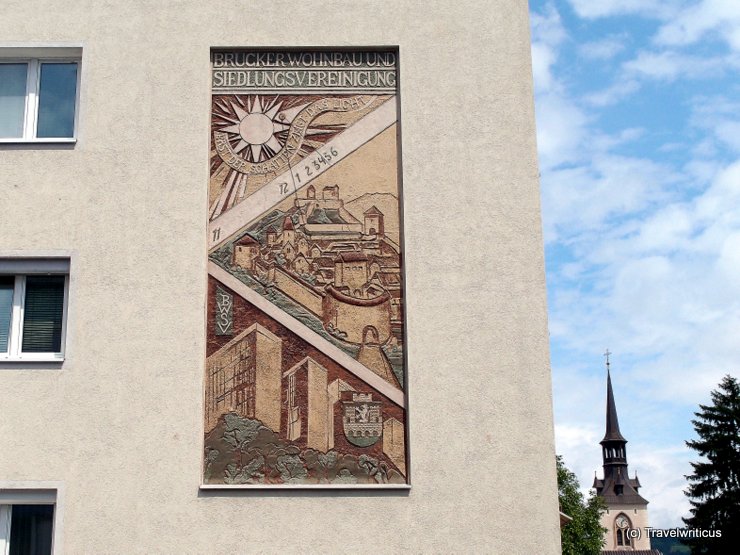
This sundial on a residential building shows two depictions of the Styrian city of Bruck an der Mur. In the upper part of the mural, you see Landskron Castle and the former city walls. [German]
You only see what you know (Goethe)

This sundial on a residential building shows two depictions of the Styrian city of Bruck an der Mur. In the upper part of the mural, you see Landskron Castle and the former city walls. [German]

Two beauties of Graz: The landmark of Graz named Uhrturm in the background and the Franciscan Church (Franziskanerkirche) in the foreground. The church is part of the oldest monastery in the city. Sometimes I walk through the hidden cloister for relaxing from the hurly-burly of the shopping streets in Graz.
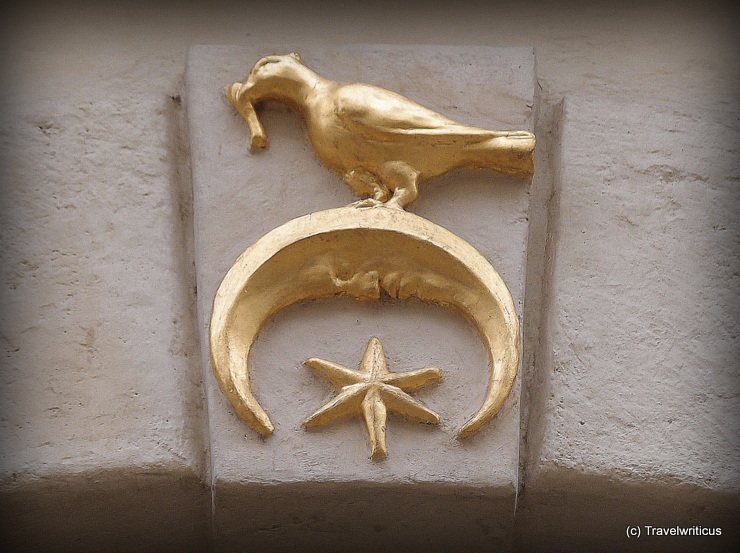
This house sign in Graz shows a bird standing on a combination of a star and a crescent. The combination of star and crescent was already known in the Hellenistic period (4th–1st centuries BCE). The crescent represents the moon, and the star represents the sun or the morning star. [German]

The manhole covers in Graz show the city arms. It is a Panther with flames from all body openings. The depiction is similar to the Styrian coat of arms. However, the modern Styrian Panther has horns and only one flame from his mouth. [German]
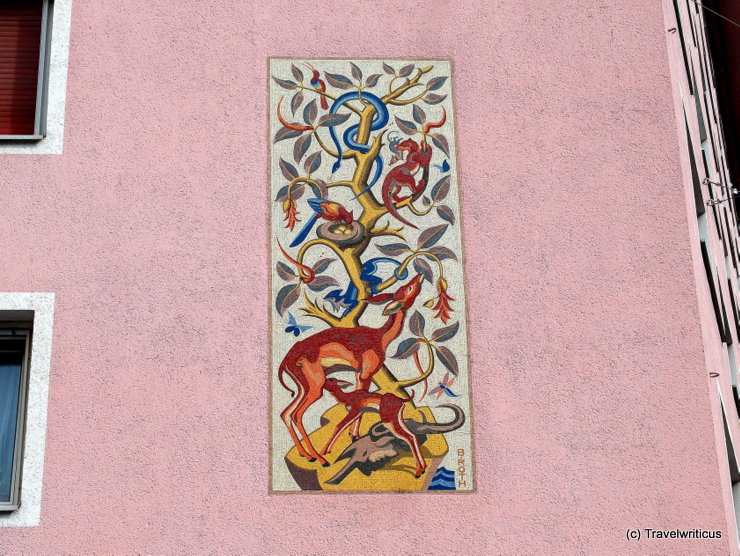
This mosaic is a work by Norbertine Bresslern-Roth (1891-1978). She is considered one of the most famous animal painters worldwide. You’ll find this mosaic at a building near Graz Central Station. The Neue Galerie in Graz showed her works in an exhibition in 2017.

On my walk to an industrial heritage site next to Kindberg, I came across the city arms of Kindberg. I saw them at an unofficial town sign at the city boundary. The photo displays the inverted side of the city arms.
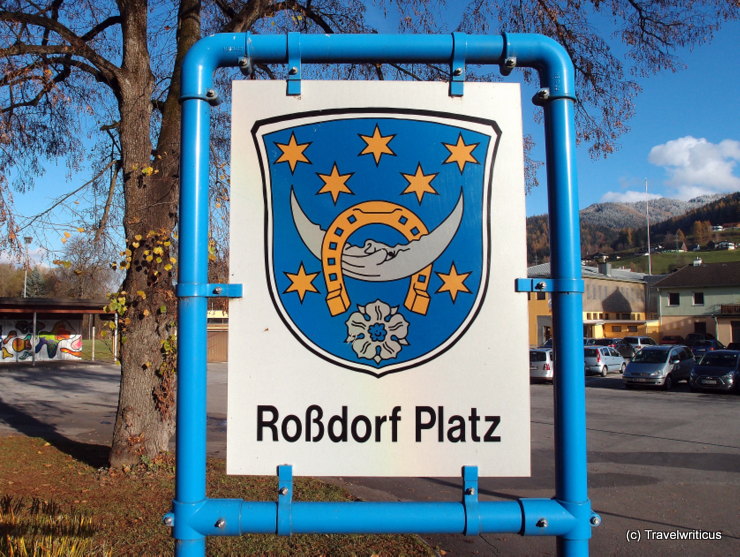
On my urban walk through Kindberg, I came across the coat of arms of Roßdorf. This is a place near Darmstadt in Germany. I love the dreamy moon in these city arms. Why is this coat of arms displayed in Kindberg? The simple answer is that Kindberg and Roßdorf are twinned.
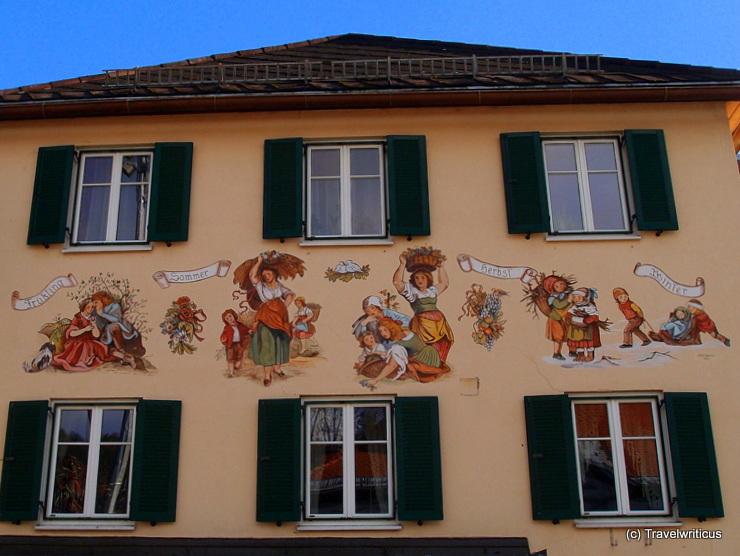
This depiction on the facade of a building situated on the Hauptstraße of Kindberg displays the four seasons: Frühling (spring), Sommer (summer), Herbst (autumn) and Winter (winter).
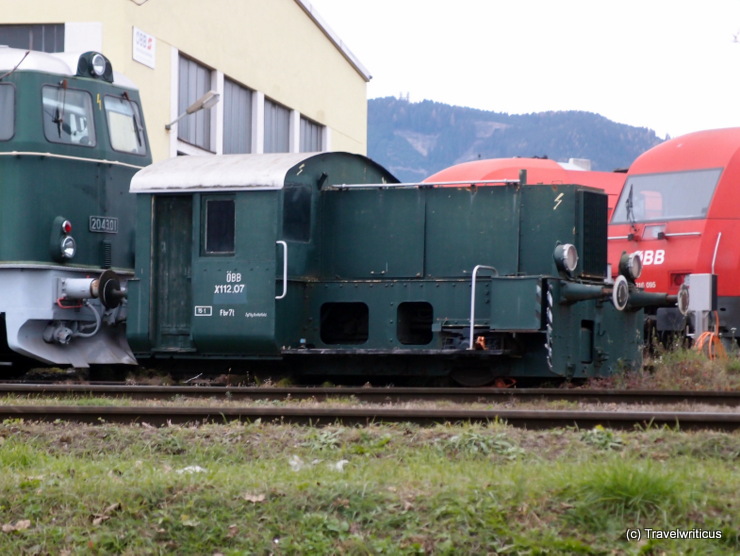
This locomotive was built in 1935 by the German company Krauss-Maffei for the German National Railway (Deutsche Reichsbahn). It is an exemplar of the DRG Kleinlokomotive Class II, which was developed as a type with low weight and driving power for light shunting duties.
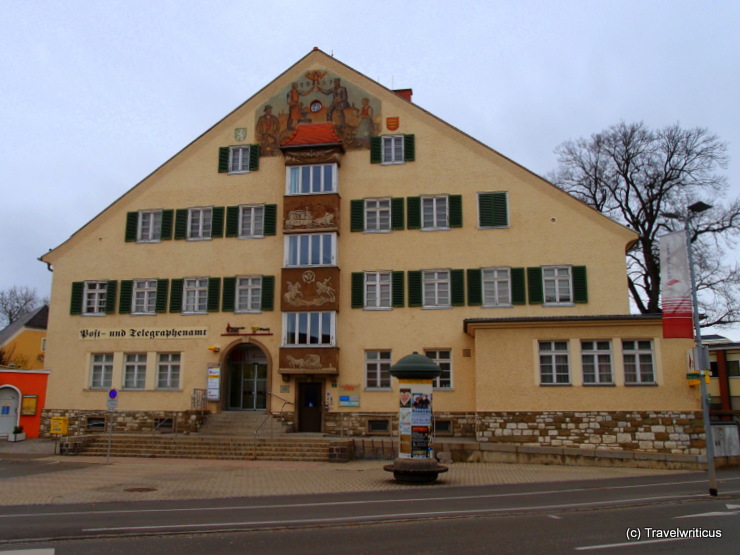
This post office building on the Kapuzinerplatz dates back to 1937. The architecture is pretty alpine. The oriel is modelled on the Golden Roof (Goldenes Dachl) in Innsbruck. The decorations on the oriel show different mail services over time.

At the sundial located at the Pfarrheim (parish community centre) of Knittelfeld one can not only see Saint Catherine but also the no longer existing town hall. The late Gothic town hall was destroyed in the Second World War.

The city arms (Stadtwappen) of Knittelfeld display three white staves in a red field. The German term for a stave is Knüttel, which could be the origin of the name Knittelfeld. The depicted coat of arms is found at the Lutherstiege, an old staircase at the former town walls of the city.